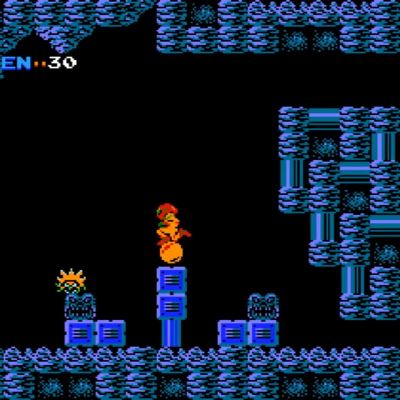Metroid: How Did NES Gamers React to Learning Samus Aran is a Woman?
Metroid may have one of the best endings in video game history, but initial reactions to the reveal that Samus Aran is a woman didn't play out the way you probably think they did.
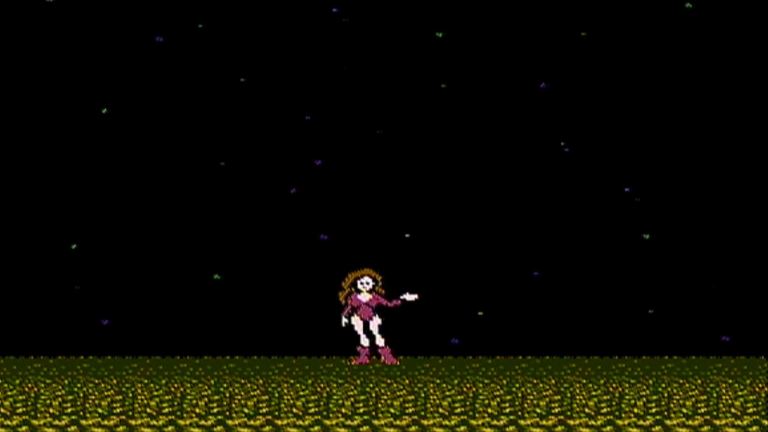
The “true’ ending of 1986’s Metroid is regularly referred to as one of the best video game endings of all time, one of the best video game twists of all time, and one of the most important moments in the evolution of video game storytelling. It is, after all, the ending that revealed that badass Metroid bounty hunter Samus Aran is actually a woman.
Many Metroid retrospectives, and even some members of the Metroid development team, have since claimed that ending shocked the world by introducing one of the most capable and prominent female gaming heroes at a time when such female protagonists were certainly less common in action games. Whatever we say from this point on, there’s no denying that this ending was unusual for its time and is rightfully seen as not just one of the great early video game endings but a touchstone moment for video game storytelling and character design.
However, it may be time to reexamine the idea that this moment was always talked about in the same way that we typically talk about it today. Indeed, some of the actual reactions to this revelation are far more complicated, more surprising, and, in some cases, more interesting than the simplified version of this story that has become popular over the years.
Why Did Metroid’s Developers Decide to Make Samus Aran a Woman?
Before we go any further, let’s start from the start and take a brief look at why Metroid’s developers decided to make Samus Aran a woman in the first place.
According to this 2016 interview with long-time Metroid team members Yoshio Sakamoto and Hiroji Kiyotake, the decision really wasn’t that complicated.
“Once we entered the final stage of development, we started talking about having different endings depending on how long it took players to clear the game. We wanted to prepare a reward for people who cleared it more quickly,” Sakamoto says. “Then someone said, ‘It would be a shocker if Samus turned out to be a woman!’ And everyone thought that would be interesting and wanted to do it, so we decided it right away.”
It feels fair to say that the Metroid team was probably right to assume that most players at that time probably wouldn’t have suspected that Samus Aran was actually a woman. They’re not necessarily saying that the idea was so absurd that nobody would see it coming but rather that cultural trends of the time probably would have made it more likely that the average person’s first instinct would have been to look at Samus Aran in their armor and assume they were a man.
Of course, it’s hard to have that conversation without talking about Ripley. Metroid was obviously influenced by Alien and Aliens, which means that people at that time perhaps should have been (and, in some cases, certainly may have been) more aware of the possibility that the badass survivor at the center of this sci-fi adventure was actually a woman. In this quote from a translated interview first featured in the Super Metroid strategy guide, Sakamoto makes it clear that Ripley was one of the major inspirations for Samus Aran’s design:
“Of course she’s a bit like Ripley from Aliens (Sigourney Weaver), but a little more extravagant.”
So the shortest answer to the question I posed above is that Samus Aran is a woman because Metroid’s developers were inspired by popular characters/actresses at the time and because they felt like the reveal would catch many people by surprise. Sakamoto confirms the latter part in this quote from that same 2016 interview:
“People who played it back then were shocked. And even now people talk about it like a kind of legend. (laughs)”
Naturally, the answer to that question brings us to a much bigger question, “How did people at the time actually react to learning Samus Aran was a woman?” Well, it’s funny you should ask…
Some Gamers Still Assumed that Samus Was Actually a Man
Before we dive further into this part of the story, you should know that I set out to find as many reactions as I could to Metroid’s secret ending from around the time they first happened. Because we’re talking about 1986, though, that means the only reliable source for at-the-time reactions are archived issues of video game magazines and similar publications.
Well, the fact of the matter is that there aren’t a lot of copies of video game-related publications from that era that have survived throughout the years. It was also kind of a weird time for that industry. We were just coming out of the great video game crash of 1983, and there weren’t really a lot of major video game publications that were widely distributed at that time, much less ones that were significant enough to have been digitally preserved 35 years later. Even if there were, a lot of publications at that time didn’t devote much space to fan letters, opinion pieces, and similar formats that may have offered more intimate insight into people’s unfiltered reactions to that reveal.
That being said, the most fascinating takeaway from the documented “reactions” to Metroid’s ending that have survived over the years is that many people apparently remained convinced that Samus was a man.
To get the ball rolling with the most official source possible, take a look at this page from the Metroid instruction book which clearly refers to Samus as “he:”
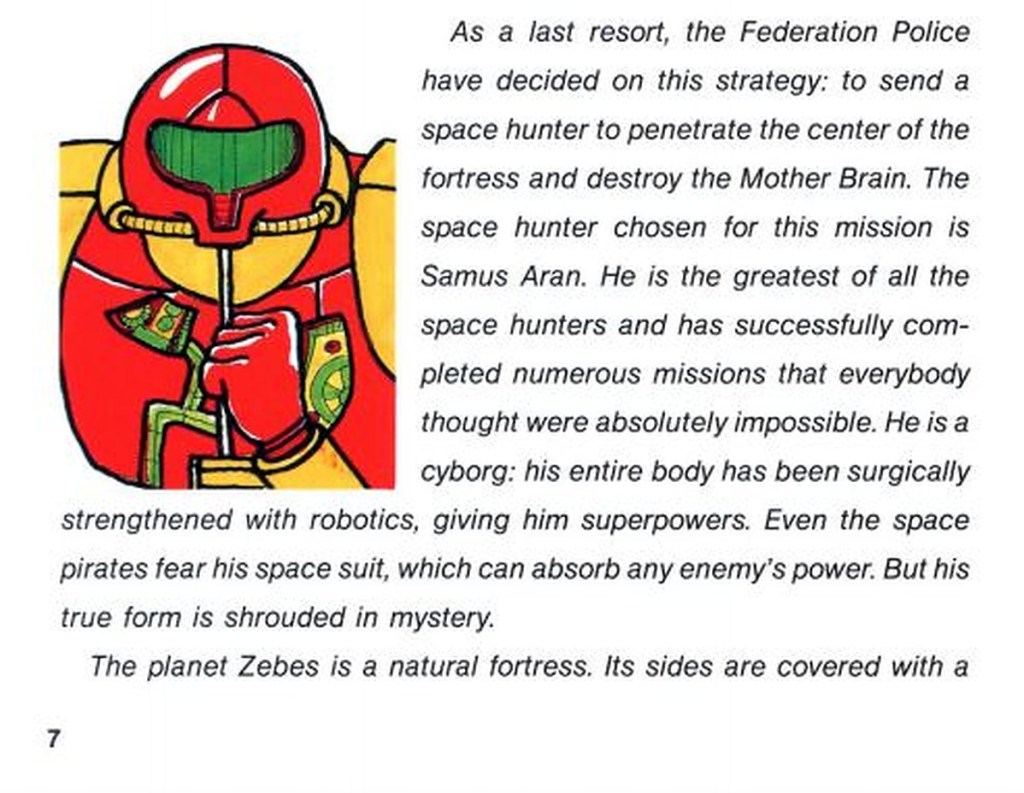
Now, because that passage also mentions that Samus’ “true form is shrouded in mystery,” it seems pretty obvious that the writer was just trying to preserve the game’s twist. That makes a lot of sense.
What’s more confusing is this early section of the Wanpakku Metroid Manga Strategy Guide which clearly refers to Samus as a man:

Ok, that’s odd, but we also have to remember that this is an English translation of the original guide and that it’s possible the translation is simply inaccurate. After all, it’s not like the artists were also trying to portray Samus in over-the-top scenarios designed to send a clear message to most people that they were a man…
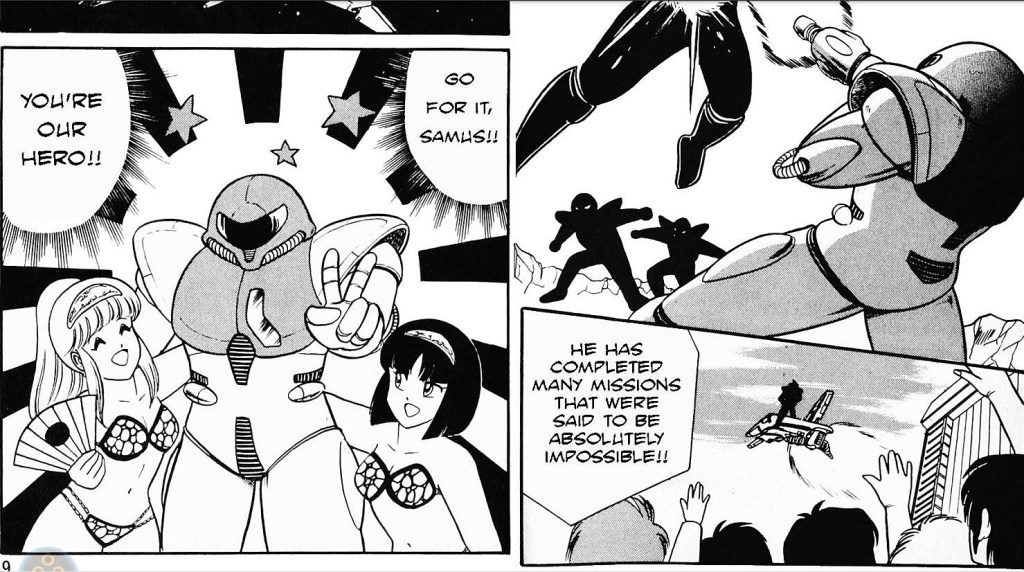
Right, let’s take another couple of steps back. First off, it’s not really clear who wrote this guide as its author’s name, Minazuki Yuu, is seemingly a pseudonym. Furthermore, there were many Nintendo-based mangas published at this time that are about as far from canonical as you can get. There’s even a Legend of Zelda manga that suggests Link and Zelda were brother and sister.
However, it’s interesting to note that this particular manga guide seems to have been created with Nintendo’s assistance. Not only does it follow the plot of the game fairly closely (which suggests that the team had some kind of early access to key parts of the game) but it even references some ideas that would be formally introduced in later Metroid games (such as Samus’ logbook and gunship).
More importantly, one of the manga’s last panels clearly suggests that Samus has a “true” identity that only “brave” players can uncover:
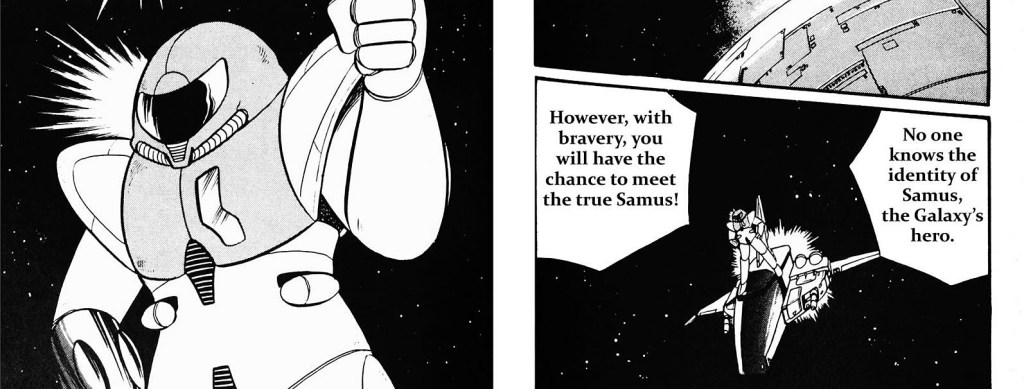
Let’s just assume, then, that the guide’s team was in on the gag and went to some crazy lengths to hide the game’s ending. It’s also possible Samus just really likes hanging out with bikini-clad admirers, though you’re going to reach out to Nintendo for more insight on that part of the canon.
Even if we can push those examples aside, though, we’re still left with this artist’s rendition of Samus that was once used to pitch an animated Metroid series that never actually went into production:
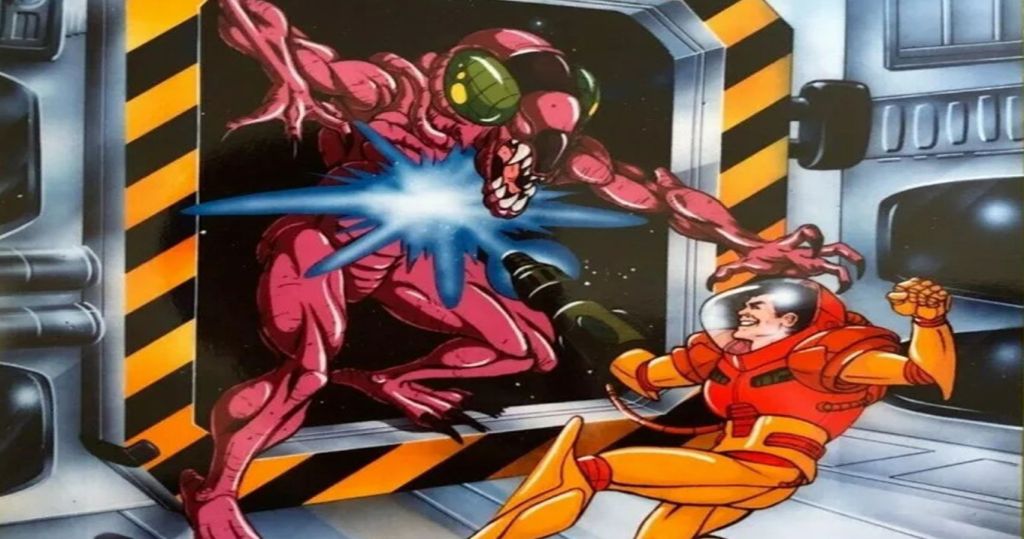
While Samus is clearly portrayed as a man in that drawing, I should emphasize that this was a pitch for a series (or segment) that was never actually produced. It’s likely that the artist simply thought Samus was a man and not that he was somehow instructed by Nintendo to portray the character that way.
However, that touches upon the much more important idea that there were was a lot of misinformation out there at the time (whether intentional or not) that still led some to assume that Samus was a man. There’s no better evidence of that misinformation than a closer look at the initial reactions to Metroid‘s most famous password.
Some Gamers Thought the Justin Bailey Cheat Code Turned Samus Into a Woman
Metroid’s legendary “Justin Bailey” cheat code not only granted players immediate access to an array of items but let you start the game in the bodysuit Samus wears during one of the secret endings. While the origins of this code remain something of a mystery, most people first heard about it in one of the various gaming magazines that printed the password around the time of the game’s release.
So far as I can tell, the March 1989 issue of Boy’s Life magazine was the first major publication to share the Justin Bailey code. However, a closer look at the wording of their description of the code reveals something…interesting.
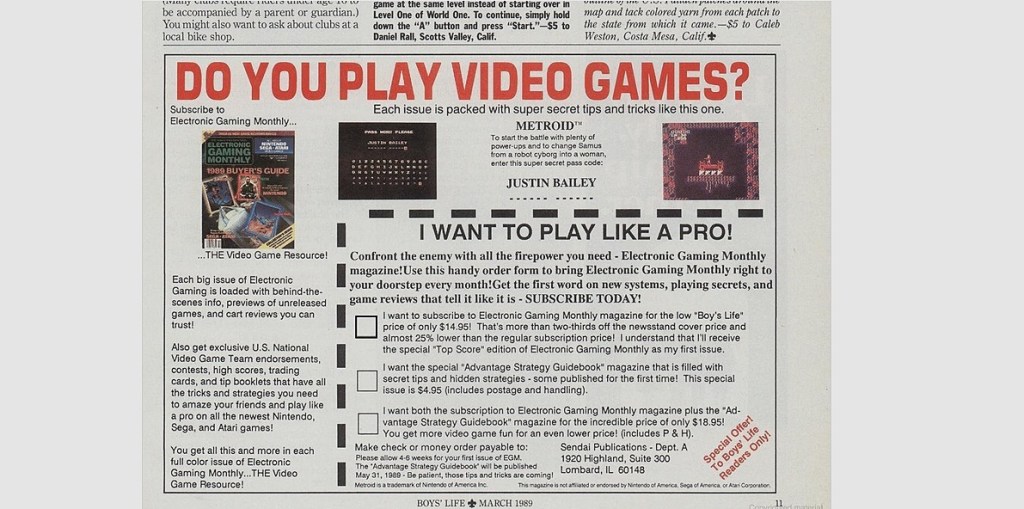
Yes, that advert’s writer seems to be under the impression that the Justin Bailey code changes Samus from a “robot cyborg into a woman.” The August 1989 issue of EGM Top Score uses slightly different wording to describe the code’s effect, but again, the writer seems to think that the code turns Samus into a woman rather than just confirms she was a woman all along:
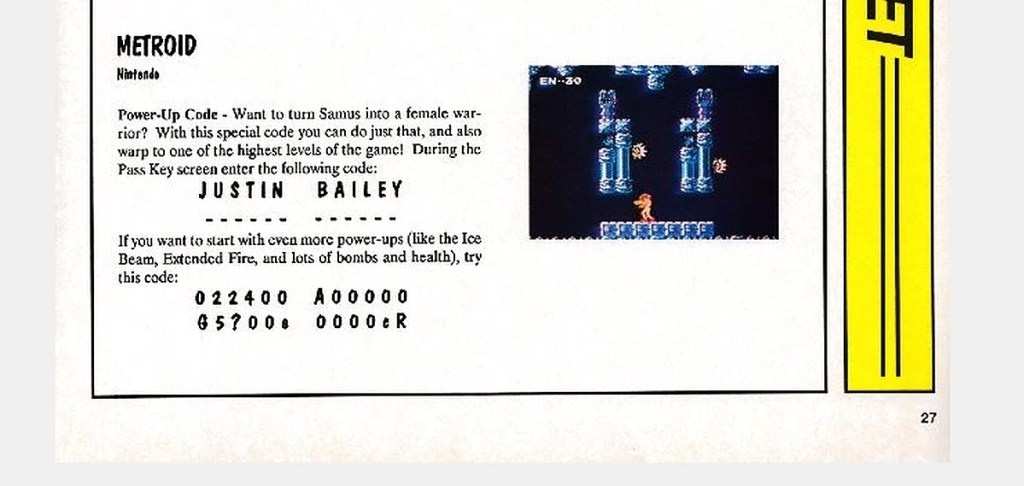
Interestingly, it seems that error wasn’t limited to EGM and their adverts. In a 1989 issue of Video Games and Computer Entertainment, a writer shares the Justin Bailey cheat code and seems to be under the same mistaken impression that the code somehow turns Samus into a woman:

What about Nintendo Power, though? While they’re sometimes wrongly credited (so far as I can tell) for being the first publication to share the Justin Bailey code, the magazine’s staff arguably made the code famous when they decided to print it in their October 1991 issue. Interestingly, though, they don’t even reference the outfit swap when describing the code’s effects:
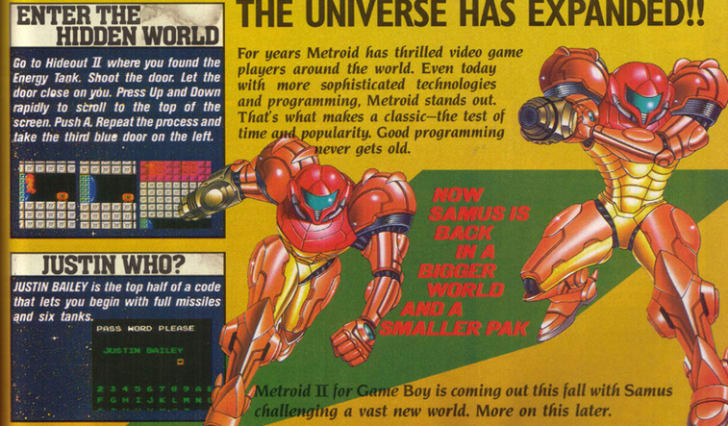
However, earlier in that same issue, the Nintendo Power team does briefly talks about Metroid‘s secret endings and even describe them as a look at Samus Aran’s “true self:”
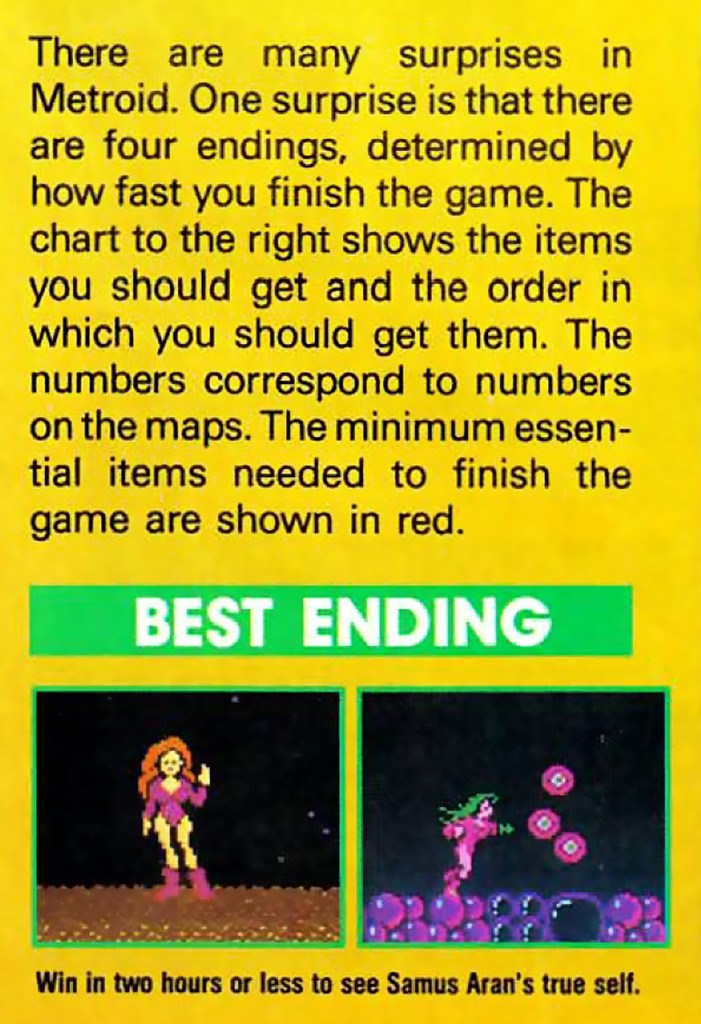
To be fair, it’s possible that the same author wrote those inaccurate descriptions of the Justin Bailey code for Boy’s Life and EGM and was just working with inaccurate information at that time. For that matter, it’s possible that they just did a poor job of describing the code’s effects.
When you put it all together, though, it’s hard to ignore the realization that there was just a lot of misinformation floating around at that time regarding whether or not Samus was a woman. It would actually take a few years for correct information regarding that topic to be widely circulated, and even then, there was still a debate regarding the specifics of that revelation and its implications.
Some Metroid Players Didn’t Find Out Samus Was a Woman Until Years Later or Just Didn’t Have Much of a Reaction to It
So when did major publications start describing Samus as a woman? Well, that seems to vary from source to source, but Nintendo Power at least started clearly relaying that information before the release of Super Metroid, as evidenced by this editor’s note that appeared in a 1994 issue of the magazine:
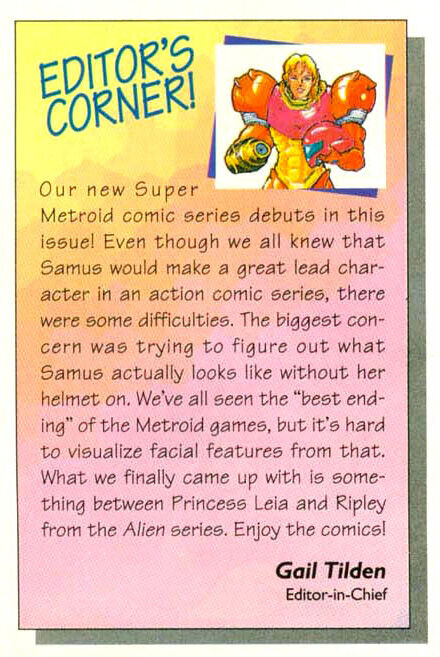
That’s not the first time that a publication directly referred to Samus as a woman, but it does seem that idea started to become slightly more common around the time of Super Metroid‘s release in 1994. That actually makes quite a bit of sense as Super Metroid wasn’t just one of the SNES’ biggest games but, visually speaking, was significantly more advanced than its predecessors. The editor’s note above even mentions that it was difficult for the magazine’s artists to accurately visualize Samus’ facial features based solely on her NES and Game Boy renders. The power of the SNES just made it easier for fans everywhere to see what Metroid’s artists were trying to convey through the character’s design. In fact, one thing you’ll regularly hear from older gamers is that they never even knew Samus was a woman until at least a console generation or two after Metroid’s release.
“Access” is the other important factor to consider here. To see Samus with her helmet off in the original Metroid, you had to beat the game in 3-5 hours. To see her in a bodysuit, you had to beat the game in under three hours. To see her in a bikini-like outfit, you had to beat the game in under an hour. All of those goals were big asks at the time, even if you were using a guide to help you. That being the case, a lot of players never saw Samus’ “true form” for themselves at the time or otherwise only heard rumors about it or the misinformation surrounding it.
What’s even more interesting is the idea that even some of those who knew Samus was a woman just didn’t think it was a big deal. While some members of that group may have just chosen to ignore it due to some kind of bias or preference, it’s important to remember that discussions about video game characters were much different at that time. Many publications at the time actually just referred to Samus as “the player” or even just “you” in guides rather than as any particular gender.
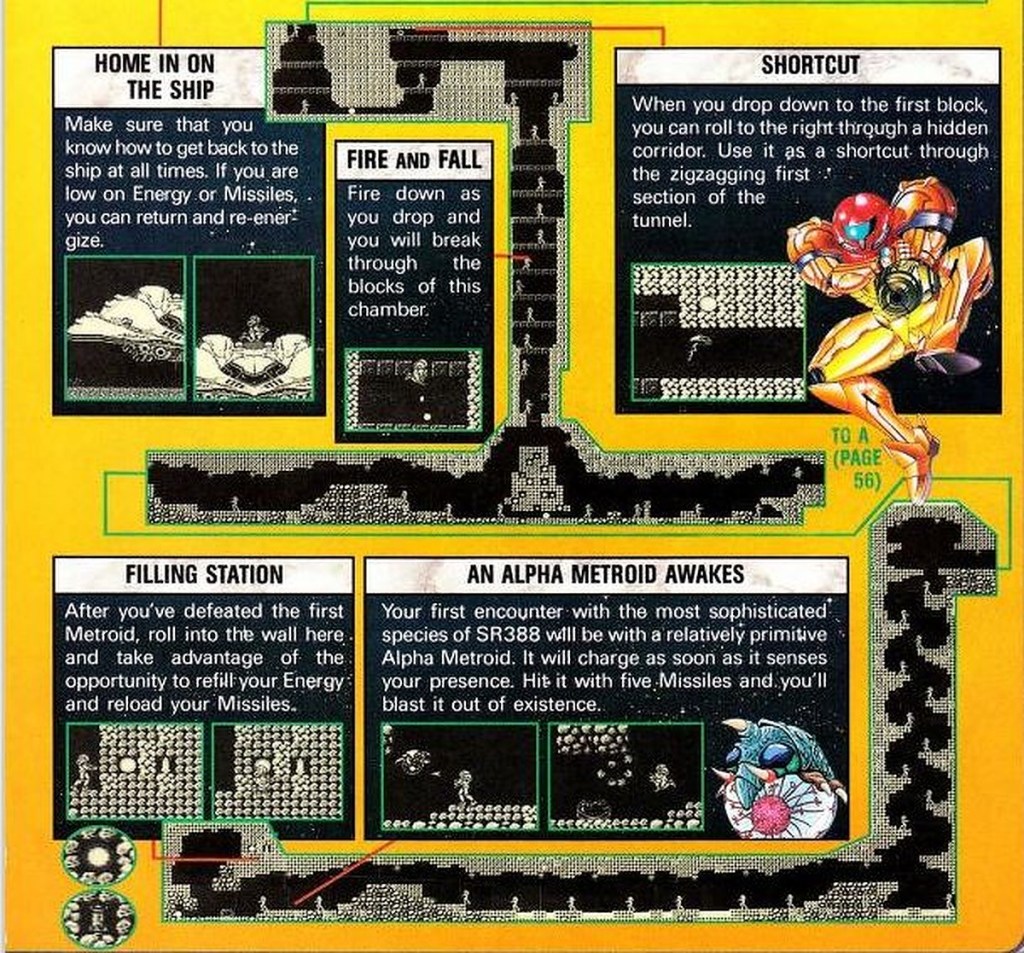
Rather than try to dive into the psychology of every individual who didn’t have much of a reaction to this reveal at the time, though, let’s just say that the unique circumstances of this reveal also meant that it wasn’t this “Empire Strikes Back moment” where a shocking twist quickly entered the pop culture lexicon. Some didn’t know about it, some discovered it years later, and some simply greeted it with relative indifference or momentary surprise.
It should also be noted that Metroid background artist and graphic designer Hirofumi Matsuoka once suggested that Samus is actually a transexual character. However, there’s no evidence that Matsuoka actually worked on Samus’ design or had any official knowledge regarding that information. Furthermore, Matsuoka’s use of a certain slang term in that interview would tend to suggest that he was actually trying to make a bad joke.
Still, the debate over Samus’ design has only gotten more heated in the years since her reveal. See, there are some who feel that Nintendo has tried to make Samus more “feminine” over the years in terms of her physical attributes. While there’s a much more complicated discussion to be had regarding that topic, a quick look at this drawing of Samus that was first published in a Super Metroid guide and this render of “Zero Suit” Samus as she appears in Super Smash Bros. Ultimate does suggest that Samus’ design has at least been altered over the years:
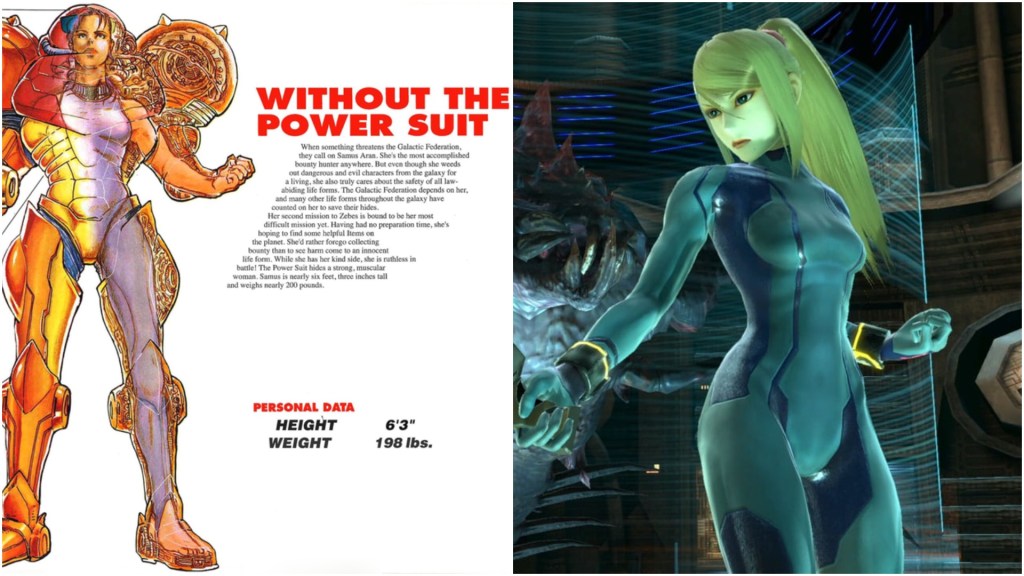
The real reason I bring this up, though, is to highlight how important it is to remember that Metroid‘s ending wasn’t the end of the conversation about the reveal that Samus Aran is a woman.
The Legacy of Metroid’s Ending Has Been Slowly Written by Various Fans Over Many Years
I can’t say what your individual reaction was to learning Samus was a woman or even when you learned about it. If you take nothing else away from this article, let it be that people actually learned that information at different times and had vastly different reactions to it.
There’s one group I haven’t talked about a lot yet, though, and that’s the group who saw that Samus was a woman and felt either a sense of pride or simply enjoyed that there was a different kind of Nintendo character/video game action star out there.
Well, while I honestly couldn’t find a lot of incredibly enthusiastic reactions to this reveal that were published at the time (though I’d love it if anyone who may have access to those reactions could share them with me), that doesn’t mean they didn’t exist. Not only are there many gamers who will tell you they had that exact reaction, but the fact that the Metroid ending has become this culturally significant part of gaming history over the years is due in no small part to the idea that most people eventually embraced it as such.
Maybe the initial reaction to learning Samus is a woman was more complicated than it’s sometimes believed to be, but initial reactions are just that: reactions. They’re quickly rendered responses that we often talk about because we want to relive the joy, terror, and shock we felt at those moments long after our own reactions have passed. In this case, though, fans initially expressed reactions of confusion, surprise, anger, joy, indifference, and more. It’s easy to retroactively apply a narrative regarding how such pop culture moments were perceived, but as is usually the case, the truth isn’t quite so simple.
Yet, it’s maybe even more interesting to see that we’ve since reached a nearly universal consensus regarding this ending’s significance. It’s just that the popularity of that general consensus makes it easy to forget that Metroid‘s ending wasn’t properly processed by quite a few gamers until many years after the game’s release.

